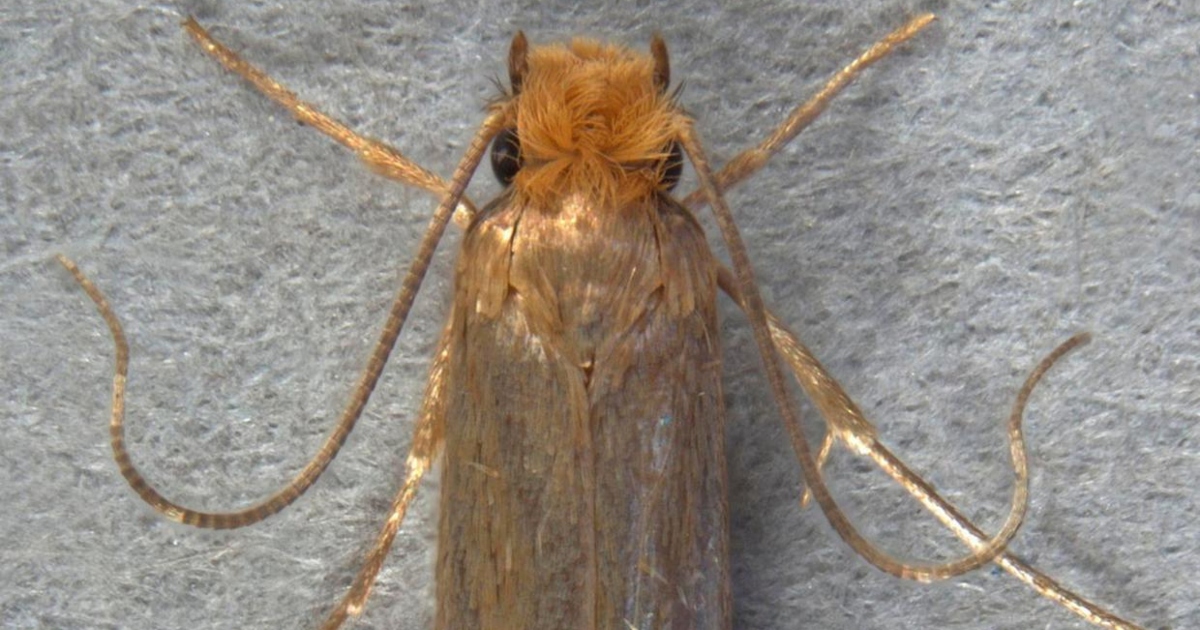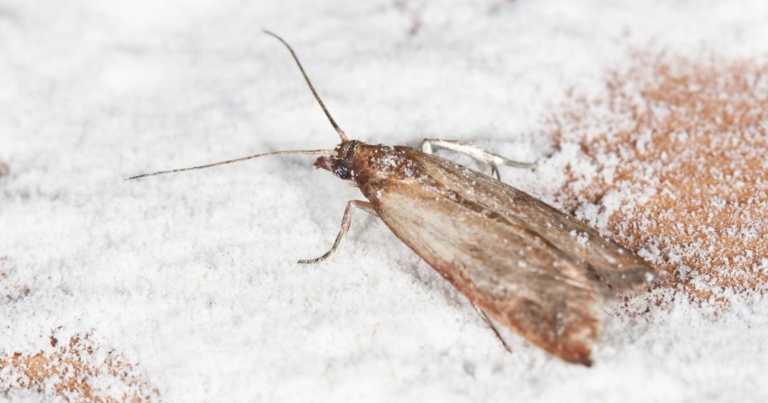How to Get Rid of Moths and Prevent an Infestation
There are a lot of harmless field moths, and it’s not uncommon to see one in your house during the summer since they’ll fly in through open doors and windows at night.
If you notice moths in your property on a regular basis, it’s possible that an infestation is growing and you’ll need to take immediate action to discover and eliminate the source of the problem to protect your house from damage they might cause.
Why Are Moths a Pest?
Although clothes moths aren’t as dangerous as many public health pests, they can be a serious problem. They can cause damage to carpets and furniture, as well as clothing made of natural materials such as wool and silk, by eating the fabric. The larvae (caterpillars) of the moth are responsible for the holes.
Moths can wreak havoc on your wardrobe, potentially causing the loss of irreplaceable and expensive items. Clothes moths have destroyed irreplaceable and priceless things like antique teddy bears, wedding dresses, and other meaningful garments.
How to Identify a Moth Infestation
Any visible damage to your clothes, curtains, carpets, or other textiles in your house is a clear indication that you have an infestation of clothing moths. The damage occurs on clothing and carpets that are left in the dark places without being washed or cleaned on a regular basis. This is due to the fact that adult moths are drawn to dark locations, where the eggs, larvae, and pupae may survive and develop.
Because of this, infestations can persist for some time before being detected, at which point significant damage has already been done.
However, infestations do not always result in damage. Other indications to be on the lookout for include:
- Adult moths are present. If you find tiny moth on the walls or in corners and around the skirting of your property, it’s worth inspecting for carpet damage beneath furniture that is firmly fixed to the floor. Only natural fabrics like wool are susceptible to moth damage.
- The presence of moth larvae. The Case-Bearing Clothes Moth’s larva appear to be rice grains and are usually the first sign of its presence. Other species’ larvae resemble cream colored maggots with a brown head, while others have a black head.
- The presence of pupae is an indication that this population has been overwintering. The pupal cocoon, which is often found amongst the silken thread of the larvae, is adhered to a variety of material including fibers, dust, and larval feces – known as Frass.
How to Get Rid of Moths Naturally
Moth infestations in your home can be more challenging to get rid of since they’re persistent. If you have a large area to clean, follow these techniques to decrease the amount of moth larvae from your property:
- Clean the entire area: Vacuum woolen carpets thoroughly and intensively, paying attention to the areas of carpet that are frequently overlooked during regular cleaning – the spaces under and behind furniture and along skirting.
- Wash all porous materials: This means any natural fabrics and soft furnishings in the vicinity of the infestation.
- All furniture should be cleaned: Clean surfaces, including wardrobes and drawers that have been affected, using a soapy solution. Moths are likely to nest and settle in areas that you leave untouched because they know they can do so there.
- Everything must be washed: Don’t forget to clean your old luggage cases, unused bags, containers, and trinket boxes that larvae may be hiding in.
- Empty your vacuum out on a regular basis: If you’ve managed to gather the larvae in your vacuum, empty it into a bin bag and throw it away right away. Not only will emptying your vacuum assist with reducing your pest problem, but it will also give it more room to collect dust and debris the next day – after another thorough clean.
- Place moth traps around the home: They’ll be attracted and exterminated by a combination of flypaper and fish oil. These may be placed virtually anyplace in the house.
- Replace your clothes hangers with cedar ones: Moths are repelled by the scent and will be deterred from eating your clothing.
- Fill small bags with fragrant substances: Thyme, rosemary, bay leaves, and lavender are all examples. You may also use essential oils as a room deodorizer and preventative measure.
- Keep your house well-ventilated: If you let too much sun and air into your home, moths will not build a nest there.
- Vacuum your house on a regular basis to remove any larvae that may have developed while you were away.
Any of the steps above may not be enough to eradicate the moths on their own. You will most likely have to use many, if not all, of the suggestions to actually get rid of your infestation. It’s doubtful that a good cleaning alone will get rid of all of the eggs, larvae, pupae, and adults. Any missed will develop and multiply again, causing more harm to your textiles and soft furnishings.
Other Methods to Get Rid of Moths
- You may also use a spray bottle or a diffuser to distribute the scent of cedar diluted with water, or place cedar chips in a jar and fill it with fragrant oil. The chemicals in cedar repel moths and various insects.
- Combine the following in a bag that you can hang anywhere: lavender, bay leaves, cloves, rosemary, and thyme. These herbs’ odors are also repulsive to moths. You may also dilute the essential oils of these plants and use a diffuser with one or more blends of these oils to scent your clothing and belongings.
- Use a sticky trap. To attract moths and get them trapped to the surface, apply moth pheromones to it. They can’t escape once they’re caught because they die when they’re unable to do so.
- Keep your floors, carpets, and moldings clean. To keep your house dust-free and dirty items out, try cleaning with a vacuum cleaner, dusting cloths, and environmentally friendly chemicals. Make sure to empty the vacuum bag and wash dusting cloths on a regular basis so eggs and larvae don’t develop.
- If you notice any moth-infested clothing or belongings, freeze them. To ensure that any larvae are destroyed, keep these things in the freezer for at least 24 hours.
- Wash all clothing that have been infested with larvae or eggs. Use hot water in the washer and high heat when drying. Set wet clothes in the freezer for a day to destroy larvae and eggs if they can’t be washed or dried thoroughly.
- If any areas of your house are infested with larvae or eggs, use vinegar and water to clean and scrub them.
- Consider hiring a professional. Removal and prevention methods can sometimes be insufficient. Contact a local pest control business if you have an insect infestation that is out of control.
How to Prevent Clothes Moth Infestations
When it comes to clothing moths, prevention is always preferable to a cure. When we are called in to eliminate clothes moth infestations from homes and businesses, it is generally after the damage has been done.
However, the control of clothes moth infestations is not difficult. Regular and complete cleaning and washing of all susceptible carpets and clothing can aid in their prevention.
This is increasingly difficult in our fast-paced world, but frequent spring cleans will help keep clothing moths out of your house and save you money on repairs.
Moth FAQ
What kills moth larvae?
A hot wash cycle will eliminate moth larvae, while insect powder does the same thing. Just keep in mind to vacuum the areas you’ve sprinkled the powder since it can harm people, pets, and children.
What are moths attracted to?
Moths are attracted to the salt (sodium) present in sweat, silk, fur, felt, and hair – anything they can consume.
Are moths dangerous?
No, moths are not dangerous. Moths can cause discomfort to people by eating their clothes or the carpeting in your living room. They won’t bite or inflict direct injury, but they may still trigger rashes and allergies.
How do moths get into the house?
If you discover a single moth in your house, it’s likely that it came in through the window. However, if you find a lot of moths, it’s probable that the larvae were brought into the home via someone else’s purchases or clothing.
How do moths reproduce?
Moths can mate sexually or asexually, depending on the species.
How do moths breed?
Female moths may lay around 50 eggs in 21 days, but they die shortly after.
Why are moths in my house?
Moths and their larvae will find a wonderful banquet of hair and textiles in each home, allowing them to flourish. They’ll also be able to find a few safe and dark spots to nest.
How long do moths live?
Moths can survive for up to 90 days, but female moths usually live for approximately half of that time.
Conclusion
Moths can be a real nuisance and, if left untreated, an infestation can quickly spiral out of control. However, with a few simple steps you can prevent them from taking hold in the first place. If you do find yourself battling an infestation, don’t hesitate to call in the professionals – it’s likely that they will have more than just one solution up their sleeves!
That being said, moths don’t exactly pose a risk to you or your loved ones. However, their larvae can damage a lot of your clothing and textiles.



